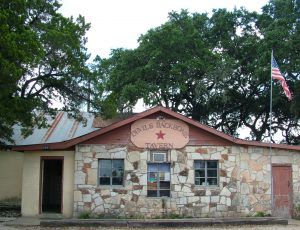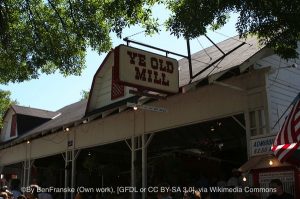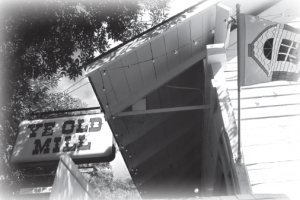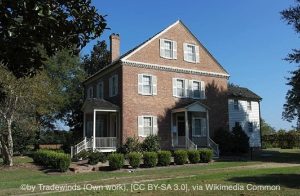In today’s post, Michael O. Varhola, author of Ghosthunting San Antonio, Austin, and Texas Hill Country, shares with us his experiences when visiting the spooky Devil’s Backbone Tavern.
One spot that travelers might want to visit along the Devil’s Backbone—a haunted highway in the Texas Hill Country north of San Antonio—is the Devil’s Backbone Tavern, a watering hole located on the site of an old Indian campground and what was once a stagecoach stop. It is patronized by ranchers, bikers, and locals (including the late paranormal author Bert Wall). It’s even the subject of a song. The “Ballad of the Devil’s Backbone Tavern” was written by musician Todd Snider after he spent a summer in the 1980s performing there on Friday nights.
Devil’s Backbone Tavern is not generally open at times when I am conducting paranormal investigation along the haunted highway, but I have stopped there for a beer and chatted about the history of the establishment and paranormal phenomena people have experienced there. Tavern staff, in fact, readily acknowledge that it is haunted and are generally happy to talk about its resident spirits, as I was pleased to discover when my wife and I stopped there with some friends in September 2014.
We ordered beers and then explored the small taproom, large dancehall, and primitive restroom facilities while chatting with the bartender, Lincoln, about some of the things she and others have experienced at the tavern. She pointed out a number of interesting details to us, including a protrusion shaped like a devil’s face in the rock of the wall above the fireplace, signs acknowledging the presence of ghosts, and some pictures of deceased patrons—one framed photo once flew off the wall and struck the wife of the person shown in it when she was complaining about him! She also said that the jukebox sometimes turns on by itself and, what’s more, starts playing songs people were just talking about.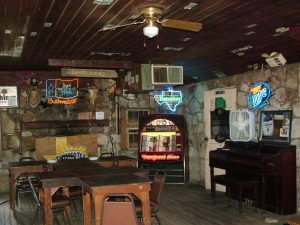
Other staff and regulars are similarly open about things they have experienced at the tavern, which include hearing disembodied footsteps and female bar staff feeling invisible hands touching
their hair.
“It felt a little spooky last night,” bartender Melaine Walker posted to the “Devil’s Backbone Tavern (Ir)Regulars” Facebook page in November 2014. “I opened the doors because it was so muggy and the next thing I saw was this weird fog swirling around in the bar. Creepy when you’re all alone! It was swirling above the shuffleboard, came up behind me and over my head as I was cleaning it.” She went on to say she thought it might have been the spirit of her deceased father, who had frequented the tavern.
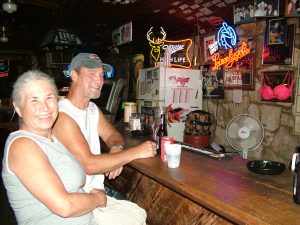 “I actually have a picture of that kind of fog,” Lila McCall responded about something she experienced at the tavern around 2008. “It’s a distinct human shape.”
“I actually have a picture of that kind of fog,” Lila McCall responded about something she experienced at the tavern around 2008. “It’s a distinct human shape.”
There is no guarantee that you will experience any of these things if you visit the Devil’s Backbone Tavern, but there is a chance that you will—and, at the least, you can enjoy a cold one and chat about the ghosts whom many believe to be present there.
